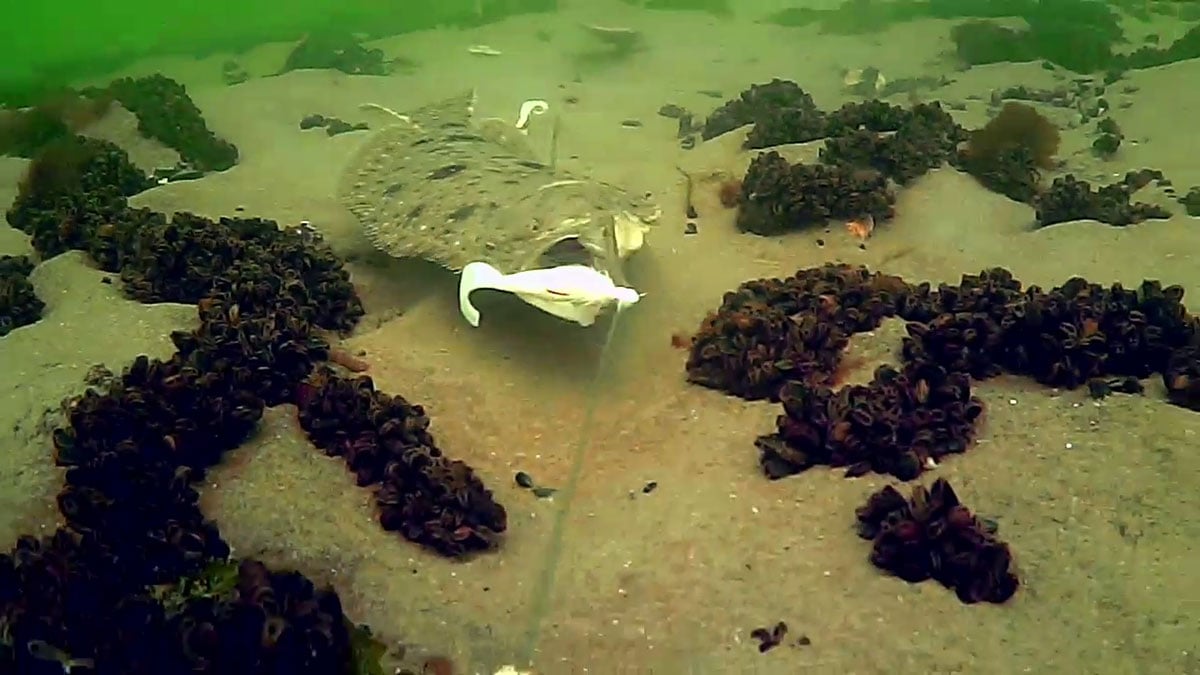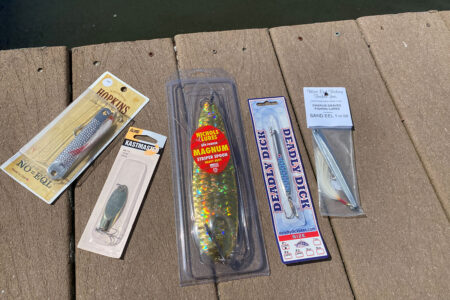
Tactics for connecting with that first fluke on the bayside.
Fishing is one of America’s favorite pastimes. But frankly, ‘not catching’ gets old quickly. Catching, on the other hand, never gets old. You need knowledge of the fish you’re after to catch fish consistently. They say, “10% of the fisherman catch 90% of the fish”, and, “10% of the water contains 90% of the fish.”
I’ll concentrate on my tactics fishing the around the backsides of inlets emptying into the Atlantic since they’re always an early season producer. Summer flounder will wait to ambush baitfish carried in and out by the tide. If you’re not fishing in moving water, you’ll probably not catch much. It’s imperative to have your bait moving, triggering a strike by the flounder worried about missing his meal. It’s important that you feel the bottom with your rig or jig when drifting. If you’re fishing from shore, just fan-cast your bait and reel it back, much like largemouth bass fishing. If fishing from a boat, drift with the tide while tending bottom. Stay on the edge of the boat channel and concentrate on any holes you find. I find that I maneuver my boat often, so I keep my engine running. A bow-mounted electric motor is ideal for setting up artificial drifts and potentially holding over spots of interest.
The next question is what to use for bait? I always fish with multiple bucktails rigged so that they’ll follow one another in a line – this is something called a Chicken Rig. You’ll need a bucktail heavy enough for the first to bounce bottom and then a 1/16-ounce bucktail for the second one about 1-1/2 feet above the bottom one. I average 20 to 30 fish a day using this rig – I’ll catch 2 or 3 keepers out of those fish in my local waters. I like eliminating all terminal tackle and hardware by tying the line directly to the bucktail so you can feel the bite and the bottom better. Tying direct allows for a more natural presentation at times. The slight weight of the second bucktail offers a bounce in the column that really gets a fluke’s attention.
Bucktails are really a universal rig. They can be dressed in just about anything, but fresh live bait like killies, fresh spearing, and/or squid is best. Soft plastic grubs and worms also work well and are much more convenient at times. When going the grub route I cut the some of the grub tails to make them thinner and vary the length. Since the bait is being moved by the tide, thinning the tail allows it to move a little easier and offers a different presentation that triggers bites at times.
We have covered where to go, what equipment you’ll need, and how to rig the bucktails. Let’s discuss the secret sauce that puts fish in your boat. The ever-important where and when. Wind and tide will be the deciding factor where you will be fishing. A wind blowing against the tide can be the biggest obstacle, as you cannot get much of a drift. If you can’t drift, move on or use your motor to overcome the wind. Fluke want to chase their food — they will follow the bait for an incredible distance before striking it. The first step is determining wind direction, which way the wind is blowing, and whether the tide is incoming or outgoing. I like to use my chartplotter to leave a trail to adjust my starting location. Remember that landmasses and buildings on the shoreline could knock down the wind if you’re drifting too fast. This work can be done before going.
The tide determines your drift speed, but 1/2 to 2 mph is ideal. Use the usual up-and-down jigging action, making sure you feel the bottom of the drop. You’ll want the bait to hop, not drag. Add and subtract weigh accordingly. The most important thing is the bucktail must be on the bottom. Fluke will never come a few feet off the bottom to chase their prey. The best time to fish is 2-1/2 hours before high tide and 2-1/2 hours after high tide. Slack tide is a good time to have lunch.
You don’t need fancy fishing equipment to catch fluke. When fishing inside, I try to keep it as light as possible. Typically, 10-pound class poles with 10-pound test braided line is what I use. No need to use fluorocarbon on these non-line weary species. Remember, going light in these situations will certainly put more fish on the deck of your boat and, just by doing that, will grab you more keepers for the dinner table. Keep in mind fluke regulations will be changing in 2024 in some states. Please check with your local conservation website before heading out to do some fluking.



